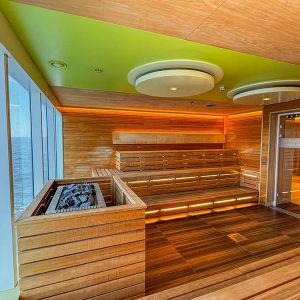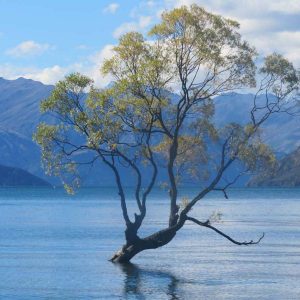Old Goa still reflects its era of European occupation and influence. The Portuguese, as one of the best-known western powers in the 16th Century, invaded countries in the east. They advanced with full force to stay on the western coast of India, but the hand of fate reversed their destiny and overshadowed their presence after four and a half centuries. Their cultural influence and amalgamation with the Indian civilisation remain. There are no longer any Portuguese among the population, but their architecture has left a lasting mark on this region. I was amazed to see many churches, chapels, monasteries and convents in Old Goa. Religion is the theme that keeps the bond of culture and tradition alive through these monuments.
I followed my guide F.X. to explore more places in Old Goa. First of all, I visited Se Cathedral, a Roman Catholic Church and the Basilica of Bom Jesus. It was obvious that we were going to do further church hopping. It is interesting to find so many monumental churches in very close proximity in an uninhabited area. During my journey, I didn’t see any houses in this neighbourhood. A plague brought death and destruction on the population of “Velha Goa” and the city was abandoned, but the old monuments, with their strong foundations, remained.
St. Augustine Church
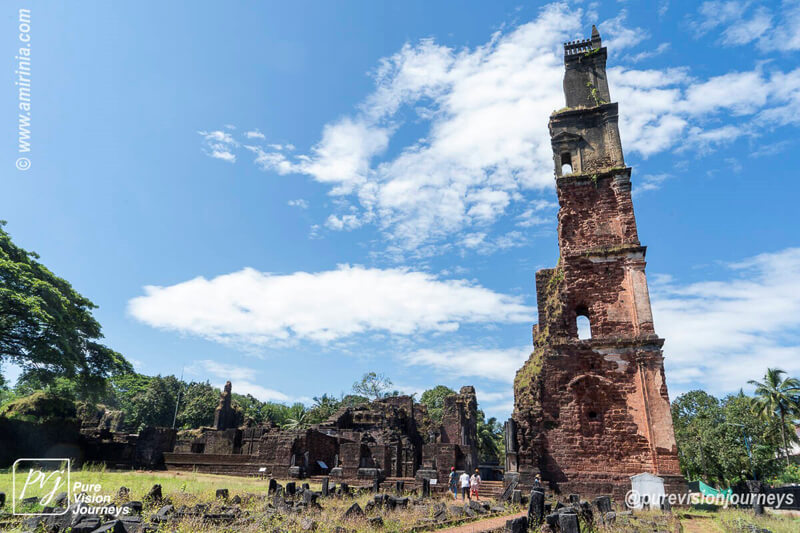 In the morning, I began my journey in an area which used to be on the outskirts of Old Goa, located in between Old Goa and Panaji. We drove up a steep road and reached the top of Monte Santo Hill, known as Holy Hill. We stopped by the ruins of St. Augustine Church which was built in 1602 by the Augustinian Friars in the style of Iberian architecture. I approached the spectacular view of the only remaining belfry tower. This tower was one of four but only this damaged one remains. I passed the cemetery and entered the church complex where there used to be eight decorated chapels, four altars and a convent. I could see the mosaics, inscriptions and the remains of curved arches. The chapel of Joseph could still be seen within the ruins. The church was abandoned following the suppression of religious orders by the Portuguese government in 1835. Years of neglect caused the collapse of the church façade and walls, however, you can still see its beauty and get a sense of the devotion the Christians who once built this amazing church.
In the morning, I began my journey in an area which used to be on the outskirts of Old Goa, located in between Old Goa and Panaji. We drove up a steep road and reached the top of Monte Santo Hill, known as Holy Hill. We stopped by the ruins of St. Augustine Church which was built in 1602 by the Augustinian Friars in the style of Iberian architecture. I approached the spectacular view of the only remaining belfry tower. This tower was one of four but only this damaged one remains. I passed the cemetery and entered the church complex where there used to be eight decorated chapels, four altars and a convent. I could see the mosaics, inscriptions and the remains of curved arches. The chapel of Joseph could still be seen within the ruins. The church was abandoned following the suppression of religious orders by the Portuguese government in 1835. Years of neglect caused the collapse of the church façade and walls, however, you can still see its beauty and get a sense of the devotion the Christians who once built this amazing church.
Convent and Church of St John
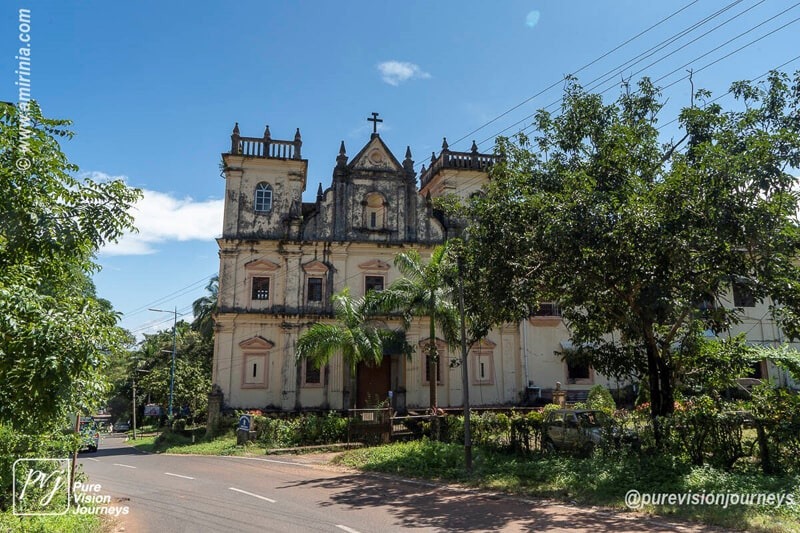 Further down the road, just opposite St. Augustine Church, is the Convent and Church of St John, built in 1685. The façade of the building is very simple in its cream-like colour. The church was used as a hospital and in a period just before the liberation of Goa, it was used as a military station. Sadly, it was closed, and I could not go inside.
Further down the road, just opposite St. Augustine Church, is the Convent and Church of St John, built in 1685. The façade of the building is very simple in its cream-like colour. The church was used as a hospital and in a period just before the liberation of Goa, it was used as a military station. Sadly, it was closed, and I could not go inside.
Museum of Christian Art and the Covent of Santa Monica
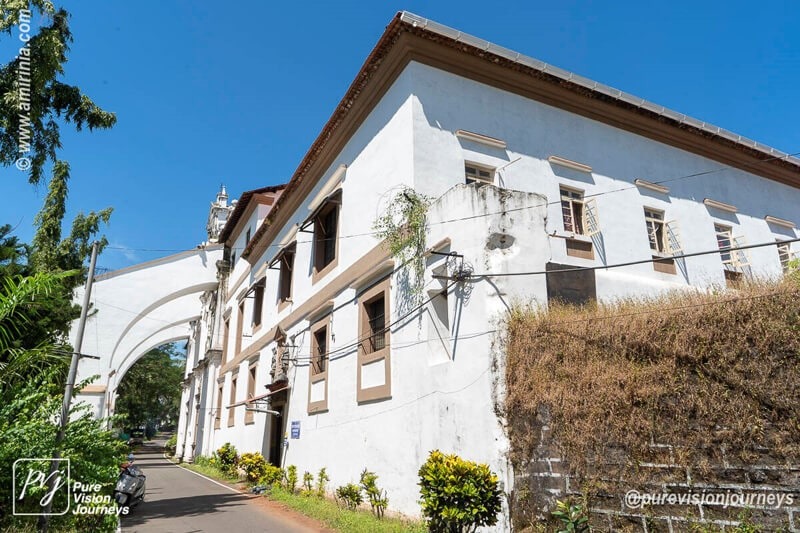 On the T-junction opposite the Church of St John, we turned into a road heading towards the Mandovi River. On my right was the Museum of Christian Art located in the complex of the Covent of Santa Monica. The Chapel of The Weeping Cross is also located in this complex, a large white building with an arch in the road. Unfortunately, I was not able to visit the museum and convent as the building was shut for refurbishment. F.X. explained that the museum houses a large collection of Christian artefacts and articles from the 16th to the middle of 20th Century, an amalgamation of Indian and European cultures. This museum, when open again, will be a must-see place in Goa to get a better perspective on the influence of Christianity in Goa. If I manage to return this would be certainly on my visiting list.
On the T-junction opposite the Church of St John, we turned into a road heading towards the Mandovi River. On my right was the Museum of Christian Art located in the complex of the Covent of Santa Monica. The Chapel of The Weeping Cross is also located in this complex, a large white building with an arch in the road. Unfortunately, I was not able to visit the museum and convent as the building was shut for refurbishment. F.X. explained that the museum houses a large collection of Christian artefacts and articles from the 16th to the middle of 20th Century, an amalgamation of Indian and European cultures. This museum, when open again, will be a must-see place in Goa to get a better perspective on the influence of Christianity in Goa. If I manage to return this would be certainly on my visiting list.
Church of Our Lady of the Rosary
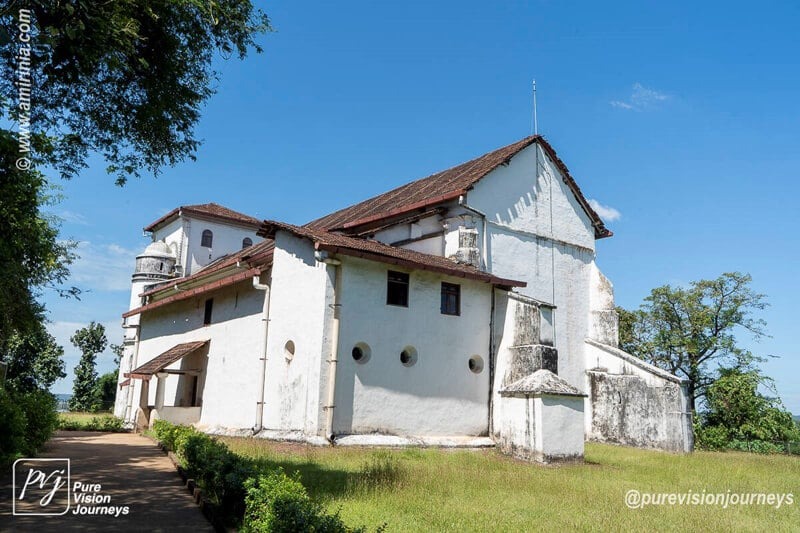 We continued to the end of the cul-de-sac road where the Church of Our Lady of the Rosary was located. The church, painted in white, looks a bit tired because of mould and black patches. The construction of the church is in a medieval style with original architectural elements. It stands on Monte Santo Hill overlooking the Mandovi River. I stood in the green grounds of the church giving me a beautiful panoramic view of the river. The land on the other side of the river looked green, but very flat. The interior of the church was also decorated in white and in a very simple design, centred by a main altar and two side altars. There were no benches or chairs. The church was built around 1547.
We continued to the end of the cul-de-sac road where the Church of Our Lady of the Rosary was located. The church, painted in white, looks a bit tired because of mould and black patches. The construction of the church is in a medieval style with original architectural elements. It stands on Monte Santo Hill overlooking the Mandovi River. I stood in the green grounds of the church giving me a beautiful panoramic view of the river. The land on the other side of the river looked green, but very flat. The interior of the church was also decorated in white and in a very simple design, centred by a main altar and two side altars. There were no benches or chairs. The church was built around 1547.
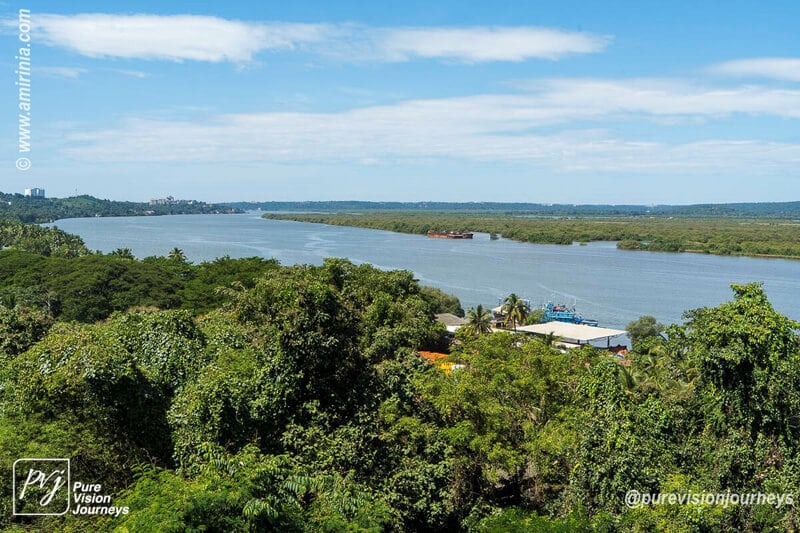 In the next part, I shall visit the Church of St. Cajetan to end my exploration of Old Goa and carry on looking at other remaining aspects of Portuguese heritage in Goa.
In the next part, I shall visit the Church of St. Cajetan to end my exploration of Old Goa and carry on looking at other remaining aspects of Portuguese heritage in Goa.
More information
For more information about Goa, visit https://www.goatourism.gov.in
To see more of Reza’s images of Goa, go to www.amirinia.com/india.
Images and story © Mohammed Reza Amirinia
Silver Travel Advisor recommends Serenity Holidays – Goa Experience

